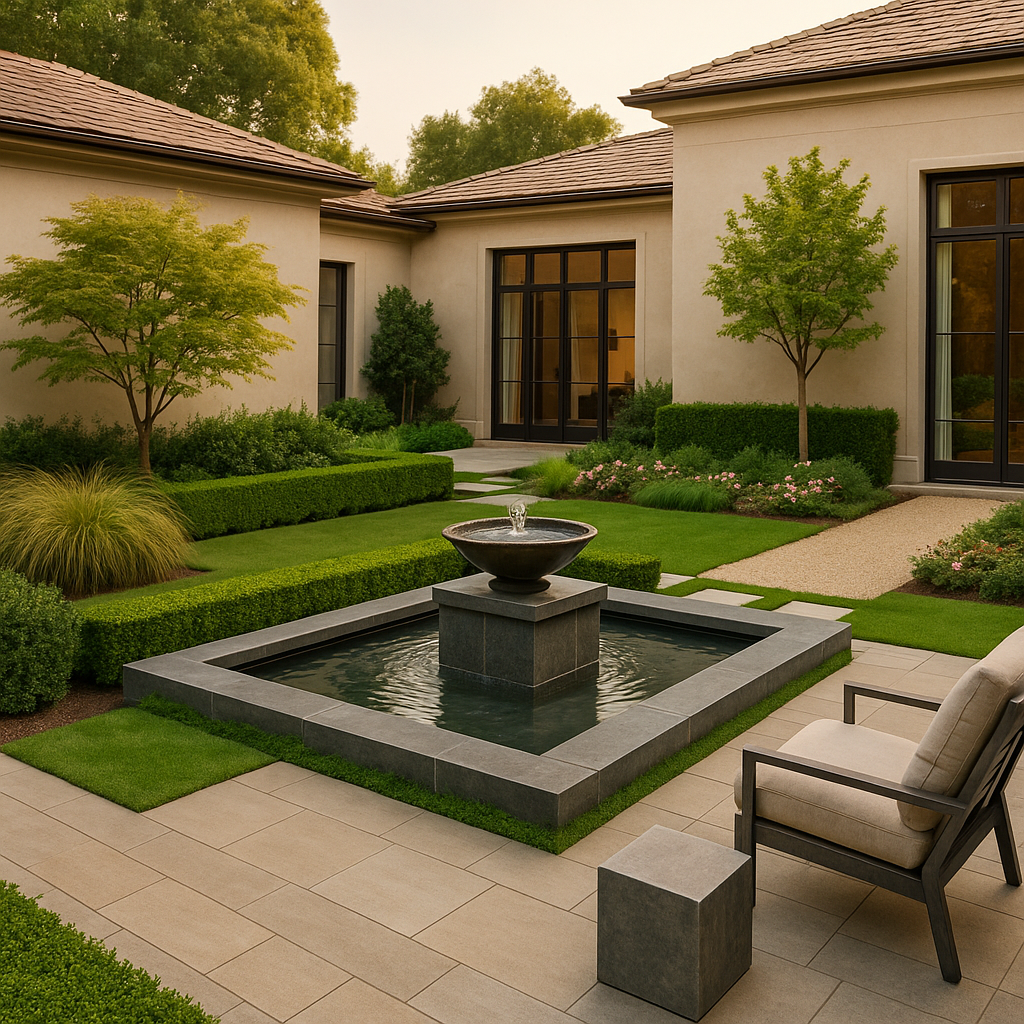In contemporary design practice, the ability to define landscape is both an art and a science. While technical expertise and natural systems form the foundation of landscape planning, the artistry behind landscape design transforms functional outdoor spaces into living works of inspiration. Modern designers are not only tasked with balancing ecology, architecture, and usability, but also with creating spaces that spark emotion, showcase cultural identity, and enrich human experience.
From luxury residences to sustainable urban developments, landscape art is about crafting environments that tell a story. This article explores how design professionals can find inspiration in art, nature, and innovation to shape outdoor spaces that are as meaningful as they are beautiful.
The Meaning of Landscape Art
To define landscape art is to see beyond simple gardening or construction. It is about sculpting land and space with intention. Where engineers and builders focus on structural soundness, designers infuse creativity—through lines, textures, colors, and forms—that evoke mood and meaning.
A landscape, like a canvas, is layered with:
- Space: the arrangement of voids and zones that guide movement.
- Form: the shape of plants, structures, and hardscaping elements.
- Texture: the tactile and visual quality of stone, foliage, and surfaces.
- Color: the palette that sets the tone of the space—calm, vibrant, or dramatic.
- Balance: the relationship between all elements, ensuring harmony.
Through these elements, landscape art creates a dialogue between human creativity and natural systems.
Tools and Techniques: From Function to Expression
Landscape artistry requires tools that can transform vision into reality. Builders and crews often rely on specialized equipment to handle heavy or delicate materials during installation.
- A scissor lifter allows precise placement of heavy stone blocks, enabling clean geometry in walls, pathways, and elevated terraces.
- A slab lifter makes it possible to maneuver large slabs for patios, water features, or garden borders without damage.
These tools bridge the gap between artistry and practicality, ensuring that large-scale materials support the designer’s creative vision.
Inspirations for Modern Designers
1. Nature as the Ultimate Teacher
Nature itself is the greatest source of inspiration. Observing rivers, mountains, and forests teaches designers how to define landscape movement, rhythm, and balance. Curving pathways echo rivers, layered planting mimics forest ecology, and stone arrangements reflect natural rock formations.
2. Art Movements and Culture
From Japanese Zen gardens to Renaissance courtyards, cultural traditions offer valuable lessons. Minimalism emphasizes clean lines and tranquility, while Baroque gardens inspire grandeur with symmetry and sculptural forms. Contemporary designers often merge these influences into hybrid outdoor spaces.
3. Sustainability as a Design Aesthetic
Artistry is no longer only visual—it is ecological. Define Landscape Work in Green Developments highlights how sustainable design practices, such as green roofs, permeable paving, and native planting, add beauty while reducing environmental impact. A garden designed for biodiversity is as visually rewarding as it is environmentally responsible.
4. Technology and Innovation
Modern landscaping embraces innovation. Automated lighting, smart irrigation, and modular features allow outdoor spaces to shift according to season, mood, or purpose. Integration with energy-saving materials such as Insulating Glass Unit Benefits for Energy Savings strengthens the connection between sustainability and artistry.
Case Studies: Defining Landscape Across Contexts
Public Gardens
Public projects demonstrate how artistry can scale to civic spaces. As highlighted in Crews Define Landscape Processes in Outdoor Spaces, professional teams coordinate design, materials, and construction to deliver spaces that enrich communities. Fountains, sculpture gardens, and performance lawns show landscape as both art and public infrastructure.
Residential Luxury Homes
Luxury properties illustrate the intersection of architecture and art. Homeowners and Builders Define Landscape Features in Luxury Homes by combining natural stone terraces, geometric water features, and specimen plantings. These projects showcase how artistry elevates real estate into unique expressions of personal style.
Geography and Natural Systems
Artistry must also be rooted in context. Define Landscape Geography: Design and Natural Systems reveals how topography, water flow, and ecology inform artistic choices. Sculpting landforms, framing views, and layering plants are artistic gestures guided by environmental realities.
The Designer’s Eye: Principles of Landscape Art
To practice landscape artistry effectively, modern designers should adopt these guiding principles:
- Clarity of Vision: Every feature should contribute to an overarching narrative.
- Contrast and Harmony: Juxtapose bold sculptural trees with soft grasses, or smooth marble with rough stone.
- Scale and Proportion: Large trees balance expansive homes, while intimate courtyards highlight finer details.
- Movement and Rhythm: Repetition of forms or colors creates visual flow, leading the eye purposefully.
- Focal Points: Sculptures, specimen trees, or reflective pools anchor designs, giving them character.
Landscape Art as Legacy
The greatest achievement of landscape artistry is its ability to endure and evolve. Trees mature, materials weather, and plant palettes shift with the seasons. Unlike static paintings, landscapes are dynamic works of art—living canvases that grow more beautiful with time.
By embracing artistry, modern designers not only define outdoor spaces but also create cultural landmarks. These landscapes become places of gathering, reflection, and inspiration for generations.
Conclusion
To define landscape art is to merge imagination with ecological wisdom, craftsmanship with innovation. For modern designers, it is about seeing the land as both medium and message—a space where beauty, sustainability, and human experience converge.
From public gardens to luxury homes, and from ecological developments to cutting-edge modern projects, landscape art inspires us to shape the world with meaning. With the support of advanced tools like scissor lifters and slab lifters, as well as sustainable technologies, designers today have more resources than ever to create landscapes that are as functional as they are inspiring.
In every detail—whether stone, plant, or light—lies an opportunity to define landscape artistry for the modern world.

